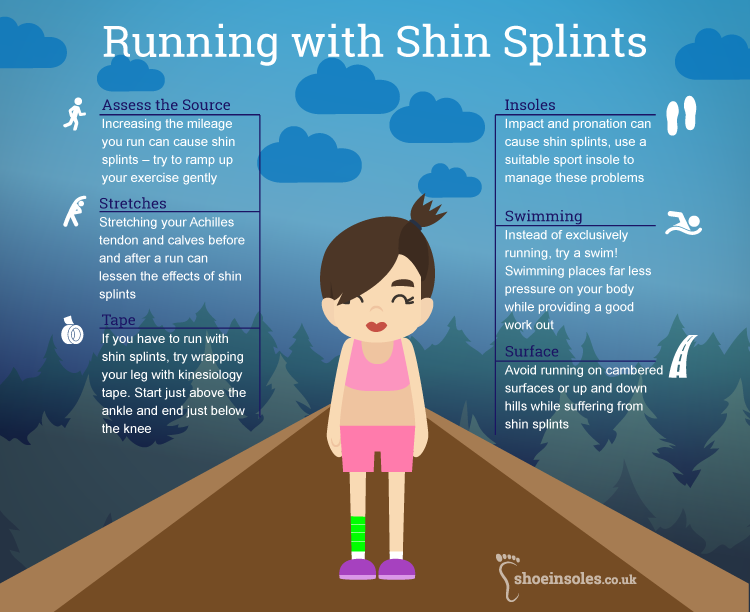The dull ache often felt running down the front part of the lower leg is often associated with small tears or damage to the muscles bone and tendons in this area. As previously mentioned shin splints are typically an overuse injury that occurs in the lower portion of the leg.
Shin Splints Ultra Runningultra Running
Runners Shin Splint Pain.

Running through shin splints. Shin splints while running are the bane of many runners. They arent normally serious but they can be a very annoying pain and if left untreated can get slowly worse. RUNNING is a great form of aerobic exercise but at least 50 percent of regular runners get hurt each year with things like shin splints.
Shin splints show up during the first three to10 weeks of a new training schedule. This is true for seasoned runners ramping up as well as newbies. Shin splints otherwise known as medial tibial stress syndrome is the name for the pain that occurs in the shins or at the front of your lower legs after running or exercise.
In case the shin splint is mild once the lower leg warms up it disappears and one can continue running. When your lower leg muscles especially your tibial muscles are overworked they start moving beyond. Shin splints are similar to most running injuries in that the most effective means of shin splints prevention is to respect the laws of adaptation.
Although anyone can be susceptible to shin splints it is often seen in beginners or people who are changing the. Shin Splints are Most Common New Runner Injury. Running Gait Analysis and Form Correction - YouTube.
The first rule when it comes to preventing all sorts of sports injuries is to avoid the three toos. Too much activity too soon with too much intensity. 1 2 There are several types of shin splints based on the location of the pain.
You will have pain and tenderness along the front of your lower leg shin. It can be impressively stubborn because there are several possible overlapping typescauses some more subtle and less mechanical than most people ever suspect. Ive been struggling with very sore shins when running the last few weeks I presume its shin splints.
How to Get Rid of Shin Splints 1. Beginning runners with low initial fitness and strength levels are 36 times more likely to develop shin splints. Heres why you should NEVER run on pavements.
Shin splints usually happen when you do exercise like running. Continuing to run with shin splints is not a good idea. If the shin splint gets worse with continued running the running should be discontinued.
A Case of Medieval Shin Splints. I took a week off and ran yesterday and they were no better. Shin splints is a type of shin pain usually caused by exercise.
Running Gait Analysis and Form Correction. This means firstly listening to your body. If you keep running on shin splints the pain will move to a more sharp burning sensation and may hurt during your entire run or even when walking.
Shin splints is an extremely common repetitive strain injury in runners and running athletes. What Are Shin Splints. Runners can develop shin splint pain if they.
And is stopping running for a while the only treatment for shin splints. Shin Splint Treatment Remains Mysterious. You should either eliminate running for a while or at least decrease the intensity with which you train.
Continuing the exercise that caused the painful shin splints will only result in further pain and damage that could lead to stress fractures. Its not serious and there are things you can do to help get better. Check if you have shin splints.
Shin splints treatment depends on what type you have. Shin pain can spreading out over many inches along the length of your shin bone or be very painful in a small area less than two inches long. Increase their running mileage too quickly.
Runners Shin Splint Pain. My current running shoes Ive had for over a year and Ive run about 600km in them if I got a new pair would that help with my shins. Advertisement - Continue Reading Below.
Things you can do to help. Prevention is always the best medicine when it comes to running injuries. Shin splints are usually due to too much too soon or the body not able to adapt and recover from the repetitive impact from running.
In order to make a decision as to whether to run or not it is important to consider the severity of the shin splint.
